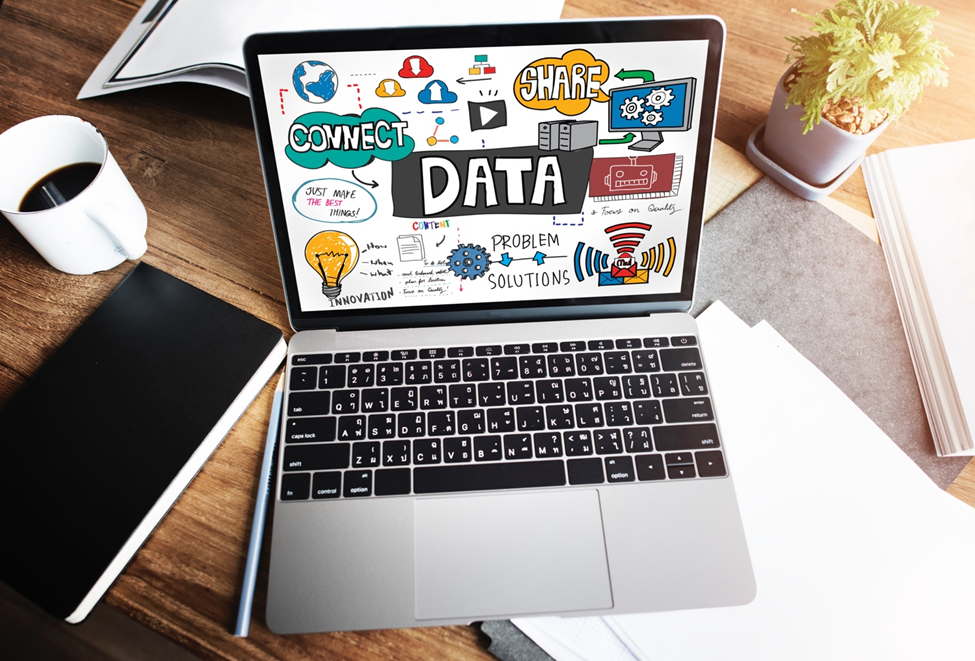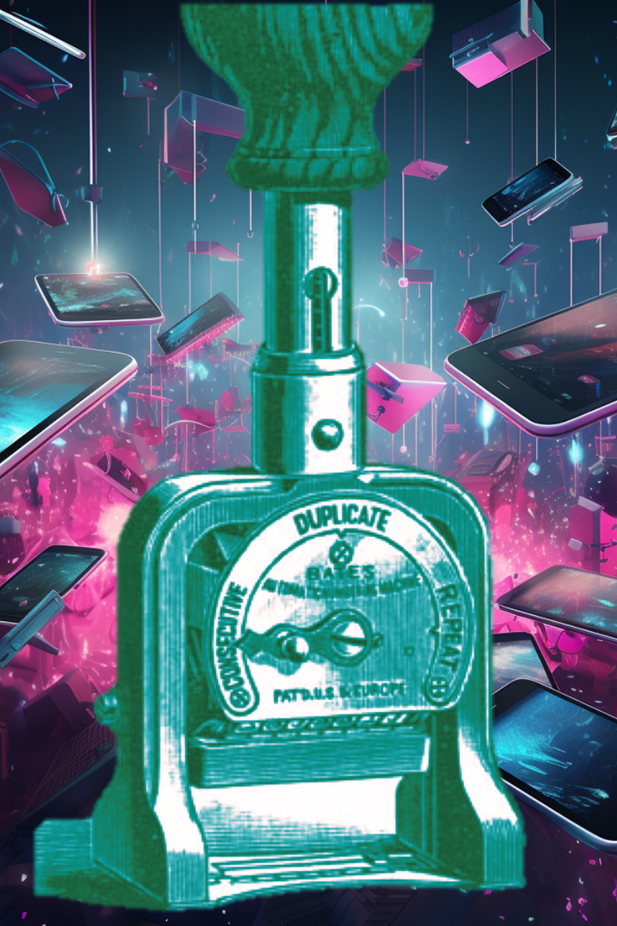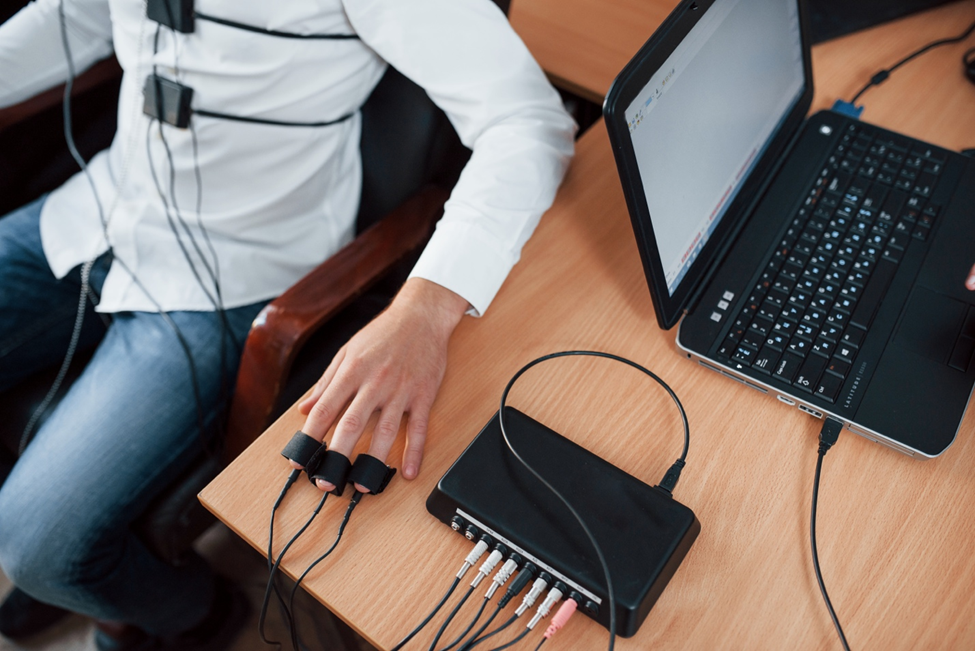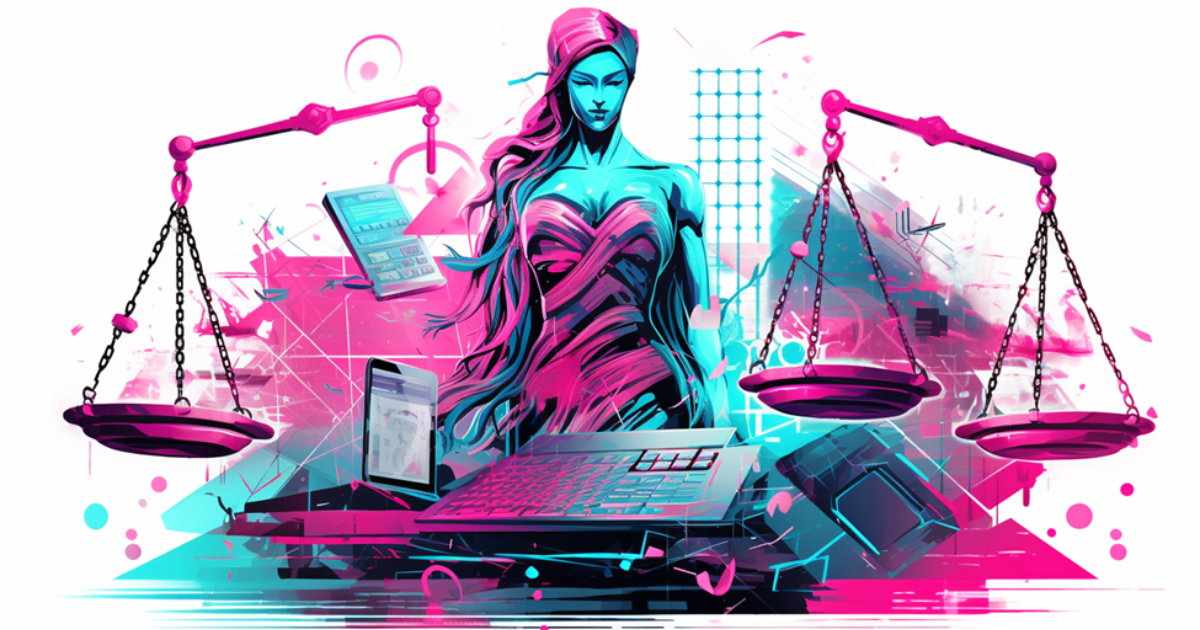More Epic eDiscovery Tips Every Litigator Needs to Know
When it comes to the rapidly shifting tides of the Electronic discovery universe, it can feel a bit like navigating a minefield. but fear not. From the looming threat of spoliation sanctions to the sheer volume, variety, and velocity of data potentially relevant data. Electronically Stored Information (ESI) can create a whole host of discovery issues if a Litigator does not come prepared.
Whether you are a first-year attorney just diving into the choppy ESI seas of eDiscovery or a veteran who remembers when a Bates stamp was a physical device, this cheeky list has you covered.
Since you all like the cheeky deep dive into the Epic eDiscovery tips every Litigator needs to know, figured would keep the awesome rolling with a second installment! This time we're going to the next level! You thought my first ten tips were game-changers? That's right, if eDiscovery were an album, consider this the deluxe edition with bonus tracks!
You asked for more, and when the Cat's away, the mice do NOT play—we get busy and cook up even more strategies to help you crush it in the eDiscovery game. Whether you're a seasoned pro looking to stay on top, or a newbie just starting to get your feet wet, these next-level tips are your passport to eDiscovery nirvana.

11. Know Your Data Sources Like the Back of Your Phone
Let's get one thing straight: eDiscovery isn't a one-trick pony. If you think you've got it covered by just harvesting emails, well, buckle up, buttercup. We're about to go on a joyride through the galaxy of data sources in this brave new Electronically Stored Information (ESI) universe.
So, you've got emails? Cute. But what about Slack messages, Teams chats, WhatsApp convos, or those elusive text messages where the real tea often gets spilled? Heck, there's even data lurking in places like Google Drive, Dropbox, or that obscure project management tool your company tried to use for a month. Each of these platforms is a treasure trove of potential evidence, and you need to be the Indiana Jones of this digital artifact hunt.

Let's go deeper, shall we?
- Metadata Magic Metadata is like the fingerprint of every digital interaction. It tells you who created a file when it was last edited, and who had their digital mitts on it. Want to prove that a document was tampered with or nail down an exact timeline of events? Metadata is your new BFF. Use eDiscovery tools that can sift through and analyze this vital data.
- The Social Butterfly Effect Friends lists, social media connections, and shared cloud folders can also be a goldmine. Knowing who is connected to whom can shed light on communication patterns. It might even unearth shadow IT systems where folks might be sharing information they shouldn’t be.
- Location, Location, Location! Geolocation data can also play a pivotal role. Say you want to prove someone was—or wasn't—at a certain place at a certain time. GPS data from their mobile device could be your smoking gun. Just make sure you’re staying on the up-and-up with privacy laws when you’re snagging this type of info.
- Hash It Out A cryptographic hash function is like your data's unique DNA marker. Use it to prove that a file hasn't been tampered with between the time of collection and review. It's an ironclad way to ensure data integrity and authenticity.
So, listen up, hotshots: The more intimately you understand your data landscape, the better you can navigate it. You’ll be able to zero in on what's relevant and kick to the curb what’s not. And in the world of eDiscovery, knowing where to look is half the battle.

12. Master the Bates
Let's cut to the chase—we need to have a heart-to-heart about the Bates Numbering. Oh yes, that innocuous string of numbers that you slap on documents like a price tag at a yard sale. But here's the kicker: those numbers are way more critical than you think. And back in the olden days you might just get carpal tunnel using a physical STAMP to apply them! Let's dish the details.
Do you know what makes a courtroom cringe? Sloppy Bates numbering, that's what. Imagine you're throwing the knockout punch in your closing arguments, only to have opposing counsel or—worse—the judge, call out discrepancies in your document references. Ouch. So, let's consider Bates numbering the social security number of your data. You wouldn’t mess that up, would you?
- The Auto-Advantage -These days, there's no excuse for manual Bates numbering. Seriously, folks, we’re not in the stone age anymore. Sophisticated eDiscovery platforms offer auto-Bates numbering features that can take care of this in a snap. Use it. Love it. But like any good relationship, don’t take it for granted.
- Manual Check: The Second Date -Technology is a gift, but it's fallible. Always do a manual review. Think of it as the second date where you make sure your initial impressions were accurate. Cross-reference a random sample of documents to ensure that the Bates numbering applied by your software matches what you intended.
- Consistency is Key - Changing your Bates numbering format halfway through a case is like changing horses midstream. Spoiler alert: it’s a bad idea. Decide your format early on and stick with it. Whether it’s purely numerical, alphanumeric, or involves special characters, stay consistent. Courts appreciate this attention to detail, and you don’t want to give opposing counsel any ammo to challenge your data integrity.

Don't Go Rogue - Lastly, don’t go rogue by removing or altering Bates numbers on documents that have already been produced. Doing this will land you in a universe of trouble that even the best eDiscovery wizardry can’t magic you out of.
So, there you have it—why Bates numbering isn't just some antiquated formality but a crucial part of your eDiscovery game plan. Master it, respect it, and it'll treat you well in the courtroom.

13. Filter First, Review Later
Trust me, I get it, document review can be like wading through a swamp—exhausting and messy. Law firms and in-house case teams are not immune from dreading this... So, let's be smart and avoid wading too deep into that quagmire.
You wouldn't bake a cake without preheating the oven, right? So why would you jump into document review without setting up your filters first? Think deduplication, date ranges, and domain-level filtering as your triple-threat power play here. You can either go it solo or with internal resources, or even bring in the hired guns of a service provider with experts and advanced analytic tools to supercharge you.
- Dedupe to Declutter First off, deduplication. The last thing you need is to review the same email chain 47 times. Many modern eDiscovery tools can dedupe your dataset, so you review a document once, and only once.
- Date Ranges: Your Time Machine Time is of the essence, and so is limiting your review to relevant timeframes. If the alleged misdeed occurred in 2020, do you really need to look at data from 2015? Probably not.
- Domain-Level Filtering And don't forget domain-level filtering. Isolate work emails from social junk. Because honestly, notifications from LinkedIn or that online shopping spree aren't pertinent to your case.

14. Get Chunky With It
Batch your review. Yep, you heard me. Group documents by concept, sender, or topic. Modern eDiscovery tools can help you auto-classify these groups. Your reviewers will thank you when they're in the groove, tackling one type of document at a time.
Some eDiscovery technology even automatically uses AI to create batches on the fly of the responsive documents. Take advantage of this AI-powered automation to ensure your case teams are always reviewing the right chunks of ESI throughout the discovery process.

15. Be a Data Detective
Think of yourself as Sherlock Holmes with a law degree. Modern communication means evidence could be anywhere: WhatsApp messages, Slack convos, or hidden in cloud storage. Use tools that can tap into these platforms. Don't leave any digital stone unturned.
Survival of the Fittest—Data, That Is: Don’t be a data hoarder. Collecting everything 'just because' can be costly and counterproductive. Use search queries, date ranges, and keyword lists to selectively harvest the cream of the crop. Your budget and sanity will thank you.
16. Forensics Doesn't Lie, People Do
Sometimes you need to go CSI on your data. And no, I'm not talking about dusting for fingerprints. We're going to full-on digital detective mode here. Forensic tools can recover deleted files, analyze metadata, and even check for data tampering. It’s your microscopic lens into the digital actions of the parties involved.
Sometimes your case requires more than a surface-level scan of documents and emails. Sometimes, you need to roll up your sleeves, put on your virtual lab coat, and dive deep into the nitty-gritty world of digital forensics.
- Deleted Files: The Ghosts of Actions Past Ever thought a deleted file is gone for good? Think again. Forensic tools can play digital necromancer, resurrecting these files back to the world of the living. Yeah, it's as cool as it sounds.
- Metadata: The Invisible Ink Then there's metadata. This isn't just data; it's data about data. (Meta, right?) This little guy tells you when a file was created, last edited, and by whom. It's like peering into the secret diary of each document.
- Data Tampering: The Whodunnit And let’s not forget the possibility of data tampering. Your forensic tools can act like your personal lie detector test, showing if someone's been messing around with the evidence. It's like catching them red-handed, only it’s digital and way less messy.
So, when your case feels murkier than a season finale cliffhanger, remember forensics is your friend. It shines a spotlight on the digital deeds—or misdeeds—of everyone involved.

17. Think Globally
You've got this, America! But wait—what about Europe, Asia, or Australia? When your case involves international data, you're not just in Kansas anymore. Different lands mean different laws, and trust me, you don’t want to be the ugly American who didn’t read the rulebook.
If your case involves international data, beware of cross-border legal constraints. For instance, GDPR in Europe has strict rules about data transfer. Make sure you’re not just crossing Ts but also dotting your international Is. If your case steps outside Uncle Sam's borders, you'd better be prepared.
- GDPR: The European Gatekeeper Take GDPR in Europe, for instance. GDPR is like that stern bouncer who makes sure you meet the dress code before entering the club. And the dress code here is all about how you handle personal data. The penalties for fumbling this one? Let’s just say you’d rather not know.
- The Legal Fine Print If you're sifting through data that sits in international servers, take a beat. Research the local laws concerning data transfer, storage, and privacy. It's not just about crossing your Ts; it's about dotting your international Is.
- Collaborate to Navigate Your best bet? Team up with local legal experts who know the ropes. These are your tour guides in the jungles of international data law, helping you sidestep the quicksand and navigate toward solid ground.
In essence, thinking globally isn’t just a catchy phrase—it’s your legal lifeline when the eDiscovery waters get international. So, pack your legal passport and make sure you're ready for the global arena.

18. Redaction Action
Redaction tools have come a long way, baby. They can auto-redact PII, financial data, and privileged information based on pre-set parameters. It’s like magic, but legal.
We're talking redactions—the digital equivalent of your grandma's blackout curtains, shielding what you don't want the world to see. But don’t get too cozy; we’ve got work to do.
- Automated Redactions: Useful but Not Bulletproof Automated redaction tools can help you blur out sensitive info, but technology isn't foolproof. Always have a second pair of human eyes look over redactions. Remember, there’s no CTRL+Z for accidentally leaking privileged info in court. So, you’ve discovered the magic of automated redaction tools. Sweet, right? But hold your horses. While these tools are convenient and can zip through thousands of pages like a champ, they're not your "set it and forget it" solution.
- Human Oversight: Your Safety Net Look, algorithms are fab, but they're not perfect. You must pair them with good human instinct. Get a second pair of eyes—preferably ones attached to a sharp legal mind—to go through those redactions. We're talking privileged info, trade secrets, personal data. One accidental leak in court, and you might as well hang a "Kick Me" sign on your case.
- CTRL+Z? More like CTRL+Uh-Oh Remember, in the court of law, there's no undo button for spilling the beans. You can't CTRL+Z your way out of a redaction fails. A minor oversight can become a monumental problem if sensitive information slips through the cracks.

19. Be Ironman, Not the Terminator
Utilize analytics to streamline and optimize your discovery process. Do everything from identifying communication patterns to gauging sentiment. Most top-tier eDiscovery platforms offer these analytics. But you want these tools to inform, not replace your legal reasoning!
The insights can be game-changing. Leveraging AI can give you superhuman powers in sorting through mountains of data. We're talking predictive coding, automated document clustering, and sentiment analysis. But don't be a robot; AI should enhance, not replace, your expertise. Use AI to cull irrelevant docs but use your lawyerly intuition for those nuanced judgments.

20. Ace the Interview
Don't underestimate the power of the custodian interview. Litigation support experts, forensic super tools and advanced Artificial Intelligence will supercharge your eDiscovery. But a well-executed Custodian interview can help you whittle down the data verse like nothing else and kick off the entire eDiscovery workflow on the right foot.
Consider your custodians the Gandalf of your eDiscovery journey. They're the gatekeepers, the "You shall not pass" folks, except instead of blocking your way, they’re unlocking the treasure trove of data you need. Prepare a structured set of questions to find out not just where the data is, but how it's stored, who has access, and any retention policies.
- Structured Q&A: Your Battle Plan Now, here's where you gotta go full-on investigative journalist. Don't walk into that interview without a plan. Prepare a structured set of questions that dig deep. Yeah, you wanna know where the data is, but my friends, that’s just scratching the surface.
- The Deeper Dive Ask how data is stored. Is it on servers, cloud storage, personal devices? Who else has access? Any third-party apps involved? Oh, and don’t forget to ask about retention policies. If the company auto-deletes emails after 30 days, you need to know that like yesterday.
- Why it Matters Having a roadmap of where data resides, how it's managed, and who can touch it is crucial. Not only does it help you in your collection phase, but it can also protect you from nasty surprises later.

21: When in doubt, Claws Out!
Now, onto the juicy bit—the Clawback. Ever sent an email to the wrong person? Well, imagine doing that, but in the courtroom. Yikes, right? That's where the Federal Rule 502(d) Clawback agreement steps in. This little gem is your safety net, your "Oops, my bad" card. If you inadvertently spill some privileged tea, this rule lets you mop it up without any stains on your legal reputation.
Under this rule, you can pull back that privileged document faster than you can say “objection!” And the best part? You get this privilege without having to jump through the hoops of Rule 502(b). It's like having a legal undo button.
Leveraging this nifty Federal courts -approved motion might have saved a certain shock jock from making a billion-dollar mistake in accidentally having his entire cell phone produced.

22. Banish that eDiscovery FOMO
The legal profession is evolving at a pace I have never seen before... set yourself up and future proof your legal career by staying on top of the trends! Join forums, sign up for eDiscovery newsletters, and attend webinars. The field is changing faster than TikTok trends, and you need to stay updated to remain the badass litigator you are.
Legal tech is constantly evolving, and so is case law. Subscribe to journals, listen to legal podcasts, or even join eDiscovery webinars to stay up to date. Not knowing the latest could put you at a strategic disadvantage.

